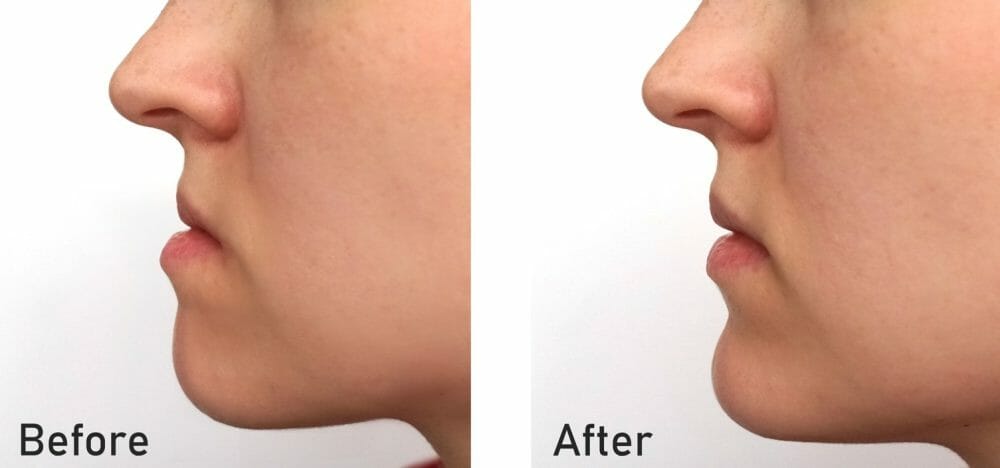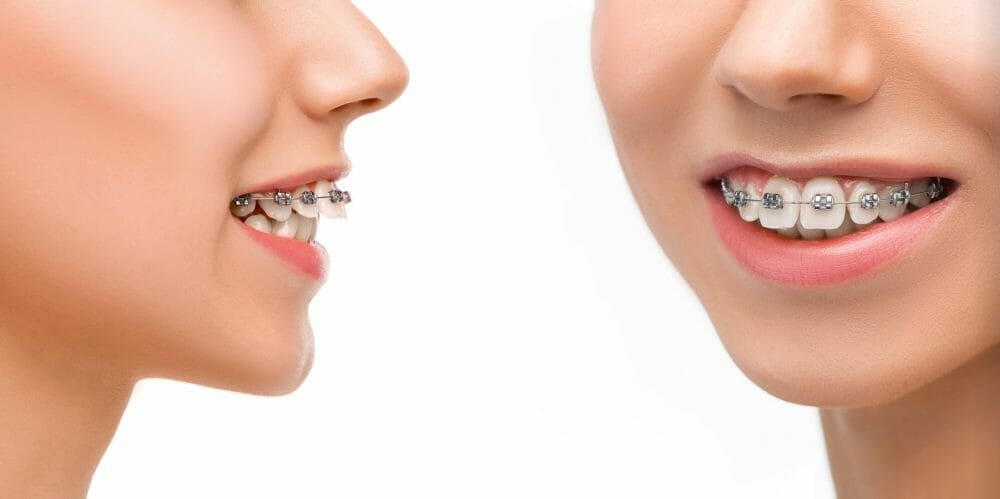Understanding Malocclusions
The word malocclusion is a Latin term meaning ‘bad bite.’ A ‘bite’ is the way teeth fit together. Problems with a person’s bite can cause many different issues, if not corrected. The highly skilled doctors at Burke & Redford Orthodontists understand the importance of and are experienced in correcting these issues in children and teens.
Malocclusions can be divided into separate classes. These classes were first developed by Edward Angle, who is widely regarded as the “father of modern orthodontics.” These classes make it easier for an orthodontist to distinguish between the types and severities of problems that can occur with the bite.

Classes of Malocclusions
- Class I – Upper front teeth set slightly forward of the lower bottom teeth. This is the most common type.
- Class II – Known as an overbite, the upper front teeth set excessively forward of the lower front teeth.
- Class III – Known as an underbite, the lower front teeth set forward of the upper front teeth.
What is an Underbite?
According to the American Association of Orthodontists, an underbite describes a condition where the lower jaw (or teeth) rest in front of the upper jaw (or teeth) when the back teeth are brought together (when biting down).
An underbite is termed a Class III malocclusion by orthodontists. Underbites can vary in severity. In mild cases, it may not be detectable by a layperson. In more severe cases, the lower jaw may protrude outward so far that it alters a person’s facial structure. If not corrected, the front teeth may be at risk of wearing down because of the bad bite relationship.

What is an Overbite?
An overbite describes a condition where the upper front teeth rest significantly forward of the lower front teeth when the jaw and teeth are brought together (when biting down). This occurs commonly when the lower jaw is smaller or shorter than the upper jaw.
While laypeople are referring to excess horizontal space between the upper and lower front teeth when using the term overbite, orthodontists use the term overbite to describe excess vertical overlap of the front teeth.
Overbites (in the vertical direction) vary in severity. An overbite is measured on a percentage scale. This scale is based on the degree of overlap between the upper and lower teeth. The overbite can be 30%, 50%, 100%, etc. The greater the percentage is, the more severe the overbite.
If untreated, a deep overbite can contribute to worn or chipped teeth.
Other Types of Malocclusions
Bite problems within the population are not limited to just underbites and overbites. There are several other types of bite misalignment.
- Posterior crossbite – When the width of the upper and lower arch is not proportional to one another (I.e., the lower jaw is wider than the upper jaw). This most commonly results in the upper teeth resting inside the lower teeth. This is relatively easy to correct in a child’s mouth as the growth plate associated with the upper jaw has the potential to be widened.
- Overjet – What most people refer to as overbite, an overjet is excess horizontal space between top and bottom teeth. Commonly referred to as ‘buck teeth.’
- Open bite – Upper and lower teeth do not meet when biting down, leaving a vertical space between the biting edges of upper and lower teeth. This most commonly occurs in the front of the mouth.

Other Orthodontic Problems Frequently Encountered
- Overcrowding – Crowding of teeth caused by lack of space resulting from crooked or overlapping teeth. This is a common condition among children and teens.
- Spacing – This is unwanted spacing between the teeth.
- Gap teeth – Known as diastema, this often refers to a gap between the upper two front teeth.
Causes of Bite Problems
Developing bite issues can usually be detected early in childhood, which is why Dr. Redford and Dr. Burke recommend interceptive orthodontics for some children.
Bad oral habits, such as sucking a finger or thumb can cause negative effects on the position of the teeth and bite relationships. The longer a child sucks their thumb, the greater the negative effects.
Thumb sucking starts to become problematic around the age of 6. This is around the time the first set of adult molars (the “6-year molars”) and some of the adult front teeth begin erupting into the mouth. If finger habits persist after this age, long-term issues with a child’s jaw, bite, and teeth can result.
One helpful orthodontic intervention is known as the habit breaker appliance. This is a fixed oral appliance that helps children to stop sucking their thumb. It works by breaking the “seal” that children find comfortable when closing their lips over their thumb.
The success rate is approximately 90%. This device usually stays in place for several months.
Other causative factors for bite problems include:
- Genetics
- Early or unexpected loss of teeth
- Cleft lip and palate
- Injuries and trauma
- Impacted teeth
- Missing teeth

Symptoms of Malocclusion
Bite problems can have some related signs and symptoms. Depending on the type, they may range from mild to moderate or severe.
- Change in facial structure
- Misaligned teeth
- Problems with speech
- Frequent biting of tongue or cheeks
- Discomfort or difficulty with biting or chewing
Underbite vs. Overbite Treatment Options
There are several ways the experienced doctors at Burke & Redford Orthodontists may correct issues with a child’s bite. Some malocclusions (underbites and crossbites) are best corrected in kids when they are younger in age (between 6-10). Other malocclusions (overbites) are typically treated at slightly older ages (around the pubertal growth spurt). Early evaluation to discuss ideal timing for correction is important to achieve the best possible result.
Expanders and other bite corrector devices are a common method of addressing malocclusions in children. These devices allow the orthodontist to positively affect the size and position of the actual jaws. Braces, on the other hand, are one of the oldest and most proven malocclusion treatments. While the jaws cannot be moved with braces alone, braces allow movement of the teeth within the jaws. This can be helpful in changing the way the upper and lower teeth fit together in kids, teens, and adults.
Tooth aligners, such as Invisalign, can also be used to correct bite problems. Thanks to technological advances, the latest versions of Invisalign can tackle more complicated malocclusions today than in previous versions. In motivated and cooperative teens, aligners can be a great tool for treatment in a discrete way.

Social Difficulties of Bite Problems
Children and teens that have issues with their bite may have social difficulties. One commonly used phrase for an excessive overjet is having “buck teeth,” something most kids would prefer to avoid hearing.
Kids can also experience feelings of insecurity due to problems with function, such as speech impediments (lisp) and difficulty chewing. Facial imbalances, such as a weak chin or strong lower jaw, can also lead to social concerns.
Early orthodontic assessment of your child by Dr. Ryan Redford and his experienced clinical staff is a good place to start when seeking the best in orthodontic care. Burke and Redford Orthodontists have been serving children and teens in Southern California since 1991.
Call to Schedule a Free Orthodontic Consultation (951) 699-8011 or Fill Out the Form on Our Website Anytime.